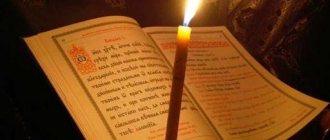What time does the evening start? When does evening end and night begin?
- It is usually customary to divide the day into day, evening, night, morning into 4 equal parts, that is, 6 hours each.
The generally accepted (and more common) division looks like this:
12.00 - 18.00 is daytime.
18.00 - 24.00 is evening.
00.00 - 6.00 - night.
6.00 - 12.00 is morning.
But there is another division, the followers of which are based, for example, on physiological ones. Followers of therapeutic fasting and a healthy lifestyle claim that from 3.00 to 5.00 is the “dew point”, when new blood is born, which means a person should sleep at this time.
From 5.00 to 7.00 new blood is born, at this time a person should have breakfast.
From 17.00 - 1.00 hours. If you eat at this time, the blood dies.
Or in business etiquette it is customary to say “good evening” starting at 17.00.
Therefore, there is such a division into evening, night, day and morning.
17.00 - 23.00 is evening.
23.00 - 5.00 is night.
5.00 - 11.00 - morning.
11.00 - 17.00 is daytime.
If you think about it, there is logic in this. After all, it is customary to go to bed at 23.00, and some even earlier. Long-livers are already quot;on their feetquot; at 5 am. Previously, at 5 they got up and milked the cows, fed the cattle, and took them out to pasture. And the roosters crow when it’s already light. They start crowing as early as 5.00.
The classic arrangement of time in a day is elementary, but as a rule no one knows it :)
If 00 and 12 are midnight and noon, what does quot; middlequot; it cannot be morning from 6 to 12 and night from 00 to 6 for example...
Everything is proportional.
Night - from 22 to 02 hours (00 hours - midnight)
Morning - from 02 to 07 o'clock.
Day - from 07 to 17 hours (12 hours - noon)
Evening - from 17 to 22 hours.
Everything is logical, at 17 o’clock they have lunch and drink tea, this is the beginning of the evening.
It lasts 5 hours - all the time it gets dark. Then night - all the useful processes in the human body,
occur in your sleep at exactly this time (if you go to bed later than 2 hours, then they do not occur at all!)
In old films you can easily hear: quot; he called me at two o'clock in the morningquot; because it's right! And the morning also takes 5 hours - at this time wars and battles began, at about 3-4 in the morning they got up earlier in the villages to do housework. The day starts at 7 o'clock!
Ten o'clock in the evening, but eleven o'clock at night - that means night comes after ten
Three o'clock in the morning, but four o'clock in the morning, which means morning comes at four o'clock
It’s eleven o’clock in the morning, but twelve is already noon—which means the boundary between morning and afternoon comes after ten.
It’s more difficult with the boundary between day and evening, but in my opinion five o’clock is already evening and probably the boundary of the day is determined by four o’clock in the afternoon.
These are purely my thoughts and feelings, so I could be wrong - criticism is accepted.
For some reason I always thought like this:
0-6 hours is NIGHT.
6-12 o'clock is MORNING
12-18 hours is a DAY
18-24 hours is EVENING
This is, so to speak, quot;legallyquot;. And in life - evening, when sunset is already close, morning - when the sun is still low. Night - as soon as it gets dark.
You might be interested:
Our life is a cycle. An endless cycle of changing days (at least as long as our planet exists). Every person knows that every day is divided into several parts - Morning, Day, Evening and Night. Each of them is limited to certain time periods. What time does morning start? Answer: Morning is the part of the day that begins at 6 o’clock in the morning and ends at noon – 12 o’clock.
There are often cases when young robbers or car thieves are sincerely surprised, saying, “What is the criminal liability, I’m not yet 18 years old?” According to the Criminal Code of the Russian Federation, criminal liability begins at the age of 14. Let's turn to Article 88 of the Criminal Code of the Russian Federation - what types of punishments can be imposed on minors? fine (if the minor owns his own property) deprivation of the right to engage in certain activities compulsory work (from 40 to 160 hours, during free time from study or...
Finally, that long-awaited (or anxious) day has come when you have every good reason to believe that you are pregnant. It could be a long absence of menstruation or just a woman’s intuition - it doesn’t matter. In any case, you need to run to the pharmacy for a pregnancy test. But a logical question immediately arises: when is it better to take a pregnancy test, how many days after the expected conception will the test detect pregnancy as reliably as possible? If…
Every woman who is trying to get pregnant inevitably encounters the concept of “ovulation.” This is a very complex physiological process. In addition, his understanding is absolutely necessary for a girl who has made a conscious decision to give birth to a child. In this article we will try to explain the phenomenon of ovulation in accessible language and without using complex scientific definitions. What is ovulation? From birth, a woman's ovaries contain about one million eggs. Each menstrual cycle is characterized by the maturation...
Can every adult define what a day is? If you think about it, we often use this word only for the time when we are awake, equating them to the day. But this is not true. It will take very little time to sort this issue out once and for all.
What do the reference book and dictionary say about this?
If you look into them, you will find several interpretations of this word. And the first answer to the question of what a day is is the following definition: a unit of time that is equal to the approximate value of the period of revolution of the planet Earth around its axis. Why approximate? Because it is not smooth, but has minutes and even seconds. To be precise, 23 hours 56 minutes 4 seconds. It is impossible to divide them into an even number of parts. And 24 hours is just a little short.
But the theory does not stop there. It turns out that a day can be solar and sidereal, planetary and used in civil life.
In order to determine what a day is, you will need to select any point in time and count 24 hours from it. Usually the counting of the day begins with sunrise, although it is more convenient to count from midnight. That is, from the hour when a new calendar day begins.
Decoding and nuances of using AM and PM
But this is all verbiage, but what do these AM and PM mean?
(how these abbreviations stand for). It turns out that these abbreviations are Latin and literally mean the following:
- AM - before noon
- PM - after noon (by the way, this is easier to remember, because the first letters in the Russian and Latin names are the same)
This can be illustrated quite well with these two pointer chronometers:
Then PM is evening, and AM is morning. Everything seems simple, but there is a small problem. All is well until it comes to noon or midnight
, i.e. am and pm cycles
In general, it turns out that in different countries that accept a 12-hour cycle, these moments can be celebrated differently ( both 12 pm and 12 am
). Thus, there can be discrepancies (such as “the glass is half full or it is half empty”). For me, it would be more logical to use not 12 pm, but 0 pm, which would be much more logical, but the bourgeoisie know better. The end result is this, in my opinion, nonsense:
After 12 a.m. it's 01a.m. etc. And after 12 p.m. it's 01p.m. I personally find it difficult to get used to (how can one come after 12?). Americans generally mark midnight in documents as 11:59 pm, and noon as 12:01 am, so that there are no legal incidents or discrepancies. They are kind of strange...
How is the day divided?
First, into 24 equal parts. From here the answer to the question logically follows: Exactly 24. Each of them consists of 60 minutes. This means there are 1440 minutes in a day. But that's not all, the latter are divided into seconds. Their number turns out to be 86,400.
Secondly, there is also such a thing as time of day. In other words, morning, afternoon, evening and night. Here the division is no longer as clear as in the previous paragraph. This is due to the subjective perception of the day by each person and different nations. And technical development has erased the boundaries between the concepts of “morning” and “day”. If earlier morning came with sunrise, because only then could one start working outside, now, with the use of artificial street lighting, one can work in the fresh air even at night.
And yet, technological progress and the ability to communicate with people from different countries required the introduction of a single division. Therefore, the time of day according to the clock became like this:
- from midnight to 6 o'clock - night;
- the next six hours are morning;
- 6 hours in the afternoon - day;
- the last six hours are evening.
Do you know what makes up a day?
From night and day. No wonder they say: “Day and night - a day away.” There are 24 hours in a day. During this time, planet Earth makes one full revolution around its axis.
Do you know what a globe is and what it looks like?
This is a model of the globe. The globe can rotate around an axis passing through its center, just as the Earth rotates around its invisible axis.
On that part of our planet that is not illuminated by the sun's rays, night reigns, and on the illuminated part of the Earth, bright day shines. The earth rotates continuously, so day and night follow each other.
Several centuries ago, people's lives proceeded at a more measured and slower pace. After all, there were no cars, no airplanes, no electric trains, no telephone communications, no radio, no television. People traveled from city to city on horseback for several days, weeks or months, depending on the distance.
People did not need special accuracy when determining time in everyday life. Therefore, the time of day was determined approximately - morning, afternoon, evening, night.
The peasants knew the time by the ringing of church bells or by the position of the sun.
Important tasks usually began in the morning. No wonder the proverb says: “The morning is wiser than the evening.”
What divisions of the day were there in the past?
The Arab peoples, for example, highlighted the following moments in the development of the day:
- dawn;
- Sunrise;
- the time of its movement across the sky;
- entry;
- twilight;
- the time when there is no sun in the sky, that is, night.
The next thing in the day is dawn, another name for it is dawn. It precedes the sunrise. That is, during it it is already dawn, but the sun is still hidden behind the horizon.
The third period is sunrise. It is associated with the direct appearance of the luminary in the sky.
The culmination of the sun's movement is associated with the next time of day - noon. Toward evening comes the time that is commonly called “before dark.” By analogy with the term “dark,” this is the period when it is still light.
Sunset refers to the time when the sun disappears below the horizon. Immediately after sunset, semi-darkness sets in, which is commonly called twilight.
What's bigger than a day?
It is logical that week, month and year. Therefore, after solving the question of what a day is, you will want to understand the definitions of other units of time.
The smallest of them is a week. It consists of seven days. The calendar starts from Monday and ends on Sunday. But it can be any sequence of seven consecutive days.
A slightly larger month. It contains from 28 to 31 days. The difference in this amount depends on the non-integer value of the lunar month, which is slightly more than twenty-eight days. Initially, the number of days in the months alternated and was either 30 or 31. And one, the last of the year - February - turned out to be the shortest. It had 29 days. But over time there have been small changes. One of the months - July - was named in honor of Julius Caesar (the emperor was born in this month). The ruler was replaced by Augustus. By the decision of the emperor, one of the summer months began to bear his name. The number of days in it was also changed to 31. It was decided to take it away from the month that was already the shortest. So, February became another day shorter.
The largest unit of time in the calendar was the year. And it also turned out to be not an integer. Therefore, its value ranges from 365 to 366. The first value is taken for common years, and the second corresponds to leap years. The latter make it possible for February to become somewhat longer. Namely, exactly for a day.
Having considered the issue, we came to the following conclusion:
Current legislation does not oblige the employer to provide additional payment to employees for working on the evening shift.
Rationale for the conclusion:
Article 149 of the Labor Code of the Russian Federation provides that when performing work in conditions deviating from normal (when performing work of various qualifications, combining professions (positions), overtime work, working at night, weekends and non-working holidays and when performing work in other conditions, deviating from normal), the employee is made appropriate payments provided for by labor legislation and other regulatory legal acts containing labor law norms, a collective agreement, agreements, local regulations, and an employment contract. The amounts of payments established by a collective agreement, agreements, local regulations, employment contract cannot be lower than those established by labor legislation and other regulations containing labor law norms. At the same time, the Labor Code of the Russian Federation does not mention such a thing as the evening shift, and does not establish the employer’s obligation to pay at an increased rate for work on the evening shift. Previously, an additional payment for work on the evening shift in the amount of 20% was provided for in clause 9 of Resolution of the Central Committee of the CPSU, the Council of Ministers of the USSR and the All-Russian Central Council of Trade Unions dated February 12, 1987 N 194 (hereinafter referred to as Resolution N 194). The procedure for her appointment was determined by the Explanation “On the procedure for applying additional payments and providing additional leave for work in the evening and night shifts, provided for by the resolution of the Central Committee of the CPSU, the Council of Ministers of the USSR and the All-Union Central Council of Trade Unions of February 12, 1987 N 194”, approved by the resolution of the State Labor Committee of the USSR and the Secretariat of the All-Union Central Council of Trade Unions dated 05/07/1987 N 294/14-38. However, the said resolution was in fact not subject to application from the date of entry into force of the Decree of the Government of the Russian Federation dated July 22, 2008 N 554, which established the minimum increase in wages for work at night (see also the ruling of the Supreme Court of the Russian Federation dated November 12, 2008 N GKPI08-2113 , letter of the Ministry of Health and Social Development of Russia and Rostrud dated October 28, 2009 N 3201-6-1), and is officially recognized as not valid on the territory of the Russian Federation by Decree of the Government of the Russian Federation dated April 28, 2011 N 332. Consequently, additional payment for work in the evening should be made only in that case , if this is provided for by a local regulatory act, collective agreement, agreement or employment contract with the employee (Articles 8 and 9 of the Labor Code of the Russian Federation). In these cases, the grounds and procedure for applying additional pay for work in the evening are determined by the provisions of these local regulations themselves (collective agreement, agreement, employment contract).
Answer prepared by: Expert of the Legal Consulting Service GARANT Chernova Anastasia
Response quality control: Reviewer of the Legal Consulting Service GARANT Victoria Komarova
The material was prepared on the basis of individual written consultation provided as part of the Legal Consulting service.
Specification of time intervals
The word “day” is often used to mean “day”. For example, “you have three days to eliminate the shortcomings.” In the meaning of “day”, this word is used when you need to indicate a sufficiently long amount of time.
If you need to set some limits, then it can be a “working day” - the interpretation in this case provides that weekends and holidays are not considered. Working days take into account business obligations - fulfillment of orders, receipt of funds in a bank account, and so on. The outdated concept of “workdays” has a similar meaning; this is a unit for recording the labor of collective farmers for subsequent payment. When they say “day off,” they mean a day free from all kinds of work duties, a time intended for rest.
When trying to understand what a day is in the minds of another person, we usually try to simplify mutual communication as much as possible. Therefore, when they tell us “call tomorrow afternoon,” it is better to clarify in what time period the call will be appropriate. For some, eight o’clock in the morning is already day, while others are still sleeping. If you don’t specify, then according to business etiquette, a day is considered on average from 11 a.m. to 4 p.m., and it would be good practice to fit in approximately in the middle of this interval. In other cases, it is better to ask for the exact time.
The term “sutasi” is absent from ancient Russian sources. Instead of the latter, the word “day” was used. In this case, the day (in the sense of day) was divided into two parts (light and dark): day in the proper sense of the word and night.
It is difficult to establish exactly when in Rus' measuring time with clocks came into use. In ancient sources, the word “hour” is often found not only in the sense of a unit of time (= 1/24 days), but in the sense of an indefinite moment (for example, “death hour”). But along with this, in a number of sources we find a 24-hour division of the day. Each hour contained 6 “fractional hours” or 60 “hours”. Thus, hour means minute. Instruments for measuring time have existed for a long time. Already from the beginning of the 15th century. The first description of a mechanical clock has reached us: “The Grand Duke decided to set up a clockmaker and set it up in his yard behind the Church of St. Annunciation.
This watchmaker was called a horometer (a device for measuring hours). Every hour a hammer struck the bell, which measured and calculated the night and day hours. It was not the man who struck, but as if by the hand of a man the evon was accomplished by itself. This was done with the help of the human mind, with the utmost skill and cunning.” The master and artist who created this device was a Serbian native, a monk named Lazar. The price of the “watch” exceeded 150 rubles.
Familiarity with the ancient Russian clock counting system is necessary because it differed from that accepted in our time, and because of this, the indications in the sources for parts of the day require translation to the corresponding hours, according to the modern division of the day.
When measuring daily time in ancient Rus', people proceeded from observations of the natural change of day and night and brought them into connection with the hours of church services.
The day did not begin at midnight, as is customary now, but at the time when people got up from sleep and returned to normal activities. This coincided with the morning service (“matins”), which began before dawn and ended before sunrise. Prince of the 12th century Vladimir Monomakh wrote in his “Instruction” to his children: “Let the sun not find you in bed. This is what my father and all good men did: having given morning praise to God, and after sunrise, seeing the sun and glorifying God with joy, he opened a council with his squad, or judged people, or went hunting...”
Thus, from the first hour of the day (according to ancient Russian reckoning), people turned to their next business. The time from 3 hours to “noon” is the “lunch” period. During this period, “mass” was served in the church. “Noon” came at 6-7 o’clock. Before sunset, another church service took place - “vespers”, and the time of day after “vespers” was adjacent to the evening. The night stretched from the end of twilight to the first signs of dawn.
In ancient Russian sources, the time at which this or that event occurs is often indicated not in hours, but in church services. Therefore, it was necessary to stop them.
In church calendars, the distribution of “day” and “night” hours was not the same for different months, as well as their divisions. If in our everyday life the day is conditionally equivalent to the night throughout the year (12 hours + 12 hours), and the hours are counted continuously (1 -24), then in ancient Rus', depending on a particular date and month, the length of the day (and, accordingly, nights) ranged from 7 to 17 hours. These fluctuations depended on the natural change of dark and light parts of the day and in connection with the change in natural phenomena.
The correspondence of clocks according to the ancient Russian measurement of time, adopted in the 16th-17th centuries, and the later calculation (19th century) is given in Table XI.
When using sources, it should be taken into account that in a number of regions (for example, in Novgorod) the counting of hours differed from that in Moscow.
Talk to your child about the day.
Additional pay for working evening and night shifts
The Labor Code of the Russian Federation does not contain a definition of the concepts “evening time” and “evening
shift” and does not regulate the employer’s obligation to establish increased wages in the evening.
Previously, additional payment for work in the evening shift was provided for by the Resolution of the Central Committee of the CPSU, the Council of Ministers of the USSR, the All-Union Central Council of Trade Unions dated February 12, 1987 No. 194 “On the transition of associations, enterprises and organizations of industry and other sectors of the national economy to a multi-shift operating mode in order to increase production efficiency.” This Decree has lost force in accordance with Decree of the Government of the Russian Federation dated April 28, 2011 No. 332.
In accordance with Art. 96 of the Labor Code of the Russian Federation, the time from 22 pm to 6 am is considered night time. In order to reduce the unfavorable factors of working at night, there is a rule according to which the duration of work (shift) at night is reduced by one hour without further work. In accordance with the legislation of the Russian Federation, a night shift is considered to be a shift in which at least half of the work time is at night. The duration of work at night can be equalized with work during the day only in cases where this is caused by production conditions (for example, in shift work with a 6-day working week; in continuous production, etc.).
The duration of night work is not reduced for employees for whom a reduced maximum working time limit has been established. In addition to the exceptions to this rule in Part 3 of Art. 96 of the Labor Code of the Russian Federation stipulates that the duration of night work is not reduced even in the case where an employee is hired specifically for night work. The Labor Code of the Russian Federation contains only an approximate list of workers who cannot be allowed to work at night.
Night work is paid at an increased rate established by the collective agreement (remuneration regulations) of the organization, but not lower than provided by law.
Article 154 of the Labor Code of the Russian Federation establishes that each hour of work at night is paid at an increased rate compared to work under normal conditions, but not lower than the amounts established by laws and other regulatory legal acts. This means that for every hour worked at night, the employee is entitled to an additional payment.
The minimum increase in wages for work at night is established by Decree of the Government of the Russian Federation of July 22, 2008 No. 554 “On the minimum increase in wages for work at night.” This amount is 20% of the hourly tariff rate (salary per hour) for each hour of work at night. And the specific amounts of the increase are established by the employer, taking into account the opinion of the representative body of employees, a collective or labor agreement.
The duration of work at night is equal to the duration of work during the day in cases where this is necessary due to working conditions, as well as for shift work with a six-day work week with one day off. The list of such works may be determined by a collective agreement or local regulations.
Labor Code of the Russian Federation, Article 154
Remuneration for work at night On the procedure for calculating hourly wage rates for employees whose work is paid at daily and monthly rates (salaries), to determine additional remuneration for work at night, see Explanation of the State Committee for Labor of the USSR, the Secretariat of the All-Union Central Council of Trade Unions dated December 27, 1972 N 12/ 35. Each hour of work at night is paid at an increased rate compared to work under normal conditions, but not lower than the amounts established by labor legislation and other regulatory legal acts containing labor law norms. (edited)
What is night work and how is it paid?
According to Art. 96 TK, night time is considered to be from 22.00 to 6.00 am. Work during this period is recognized as night work. The employment contract specifies working hours; the employee signing the contract additionally signs his consent to work at night.
According to Article 154 of the Labor Code, an employee working during the specified time period can count on additional payment for each hour of work. This article refers to Government Decree No. 554 of July 22, 2008, which states that the minimum additional payment is 20% of the hourly rate or salary calculated for 1 hour.
The executive body has set a lower limit beyond which employers have no right to go. But the upper limit may be higher if it is approved in:
- Collective agreement;
- In a local act of a specific organization;
- In the employment contract.
That is, organizations themselves can increase additional payments to their employees. We are talking about an additional payment for the watches themselves, and not for quality characteristics; for example, the additional payment is not affected by how much the employee produced.
And in many English-speaking (and not only) countries it is generally customary to use a 12-hour time format
, and divide the day into only two periods - before noon (am, ante meridiem) and after noon (pm, post meridiem). It is not customary for them to use descriptive constructions (although this does not mean that they do not use them at all), so the problem of dividing the time of day remains.
Are we really that far from the 12 hour clock?
The time format using AM and PM is widespread not only in the bourgeoisie; sometimes its echoes can be observed in the RuNet space (mainly in localized bourgeois projects). For example, well-known to many bloggers, he suggests choosing the time for sending letters to subscribers based on the 12-hour format, rather than the 24-hour one:
It seems that the time zone means that am and pm are not understood here, and the interface has been translated into Russian. But no, habit is second nature. How should I understand 11:00 am - 1:00 pm? Is it from eleven in the morning to one in the afternoon or from eleven in the evening until one in the morning? You need to google, and so on every time, to know for sure...
Although, I probably shouldn’t have attacked the bourgeoisie with their AM and PM. If you think about it, you and I also half live in a 12-hour world
. For example, when they ask you the time, you don’t answer that it’s fifteen minutes to eighteen, but say that it’s fifteen minutes to six, and a person can determine whether it’s evening or morning. In this regard, we are the same.
At the same time, in Russian-language texts in most cases (and always) a 24-hour time scale is used. But our clocks are again in 12-hour format. It would probably be difficult to fit 24 hours in there and it would look overloaded.
But our digital clocks are again 24-hour, while the Americans, judging by the films, have 12-hour clocks indicating am and pm
Oh, how everything in life is mixed up, if you think about it.
What is a day and how are they divided into parts?
If you look into them, you will find several interpretations of this word. And the first answer to the question of what a day is is the following definition: a unit of time that is equal to the approximate value of the period of revolution of the planet Earth around its axis. Why approximate? Because it is not smooth, but has minutes and even seconds. To be precise, 23 hours 56 minutes 4 seconds. It is impossible to divide them into an even number of parts. And 24 hours is just a little short.
Basic truths [edit source]
Basic truths are truths that do not require additional proof. For those who do not understand the Russian language, an explanation: Noon means a full day, not half a day. Half a day is shortened to “half day”, not noon. Midnight is a full night. 0 hours – midnight, then decreasing. 12 o’clock – noon, that is, a full day, then decline.““
I believe that the above is incorrect. If you look in an explanatory dictionary, you get: Ozhegov’s Explanatory Dictionary: noon is the middle of the day, the time of the sun’s highest position above the horizon, usually corresponding to 12 o’clock. Efremova T.F. Explanatory dictionary of the Russian language: noon - the middle of the day, the time of the sun's highest position above the horizon, corresponding to 12 o'clock in the afternoon. 77.240.147.158 09:20, June 4, 2013 (UTC)Programict
• half – abbr.: half… / half… (for example: half moon)
• full (all completely) – abbr.: full... (for example: full moon)
• noon – from the word “noon” (for example: sleep until noon)
• midnight – from the word “midnight” (for example: walk until midnight)
• semi... - 1. with a blow. and without a hit. The first part of compound words with the meaning: 1) half, half, half (of what is indicated in the 2nd part), in half with something else: half-barrel, half-light, half-velvet, half-meter, half-paper,... Ushakov’s Explanatory Dictionary
What time does the day start?
A fairly pressing question in this topic is “What is the best way to start your day?” First of all, I would like to note that, despite all the rules, it is best to start your day with a good night's sleep, because this is the most important thing for the successful implementation of further affairs. So, if this means sacrificing your evening activities, rest assured that it will be worth it. Also an integral component of a successful day is morning exercise. If you have the opportunity to go for a run in the morning, you will fill your body with even more energy and alertness.
From what time is it day?
I compiled a table of personal feelings: Night Morning Day Evening 24/0 1 2 3 4 5 6 7When does the evening begin? I thought today when I went out to throw out the trash: is five o’clock five in the evening or five in the afternoon? Colleagues, is there any accurate information until what hour should you say good morning, then good afternoon, and what time should you start saying good evening? Not very important, but just interesting, since I was once picked on about this issue. As mentioned above, in everyday life the term day is often replaced by the word day, but in any case, in the Russian language there are words for unambiguously separating the concepts of “day” (daylight) and “day” (24 hours). Question 195380 What is the correct way to say - four o'clock in the afternoon or four o'clock in the evening? And if there is, then there is almost no evening. Because evening is often called night - I can’t say exactly from what time. Until one o'clock in the afternoon there was a conference at which important problems of the university were discussed. In colloquial speech we often use the phrase “until one o’clock.” What time does the church day begin? I read that the evening service in the temple already refers to tomorrow. Does this mean that the fast day begins before five o'clock in the evening on Tuesday and Thursday? For example, in the Russian language they say “two o’clock in the morning”, but almost always - “four o’clock in the morning”, in other words, four o’clock is already morning, although in winter on the other side of the window at this time. According to this division, the day is divided into four equal intervals according to 6 hours each. “at such and such an hour” is used to mean “at such and such a moment in some process”). In the genitive case there are equal forms: “about an hour” and “about an hour”, “before an hour” and “before Yekaterinburg celebrates International Holocaust Remembrance Day January 26, 2019 15:58. June 2015. 159257. How to correctly divide 24 hours into morning/day/evening/night? LanguageEtiquetteSocietyScience. Reply. Other answers by the author. At what age can you call a woman a woman? And at what hour does evening or night begin for them? Eleven o’clock in the morning, but twelve is already noon - which means the border between morning and day comes after ten.
Greetings according to the rules of etiquette
Compliance with politeness and certain rules of behavior when communicating with people immediately allows you to form a definite opinion about a person.
Of course, a cultured and educated person has a better chance of working successfully with people and has more effective interactions with colleagues and management. It is necessary to know etiquette in order to feel confident in any environment.
Greeting is the basis for meeting people, maintaining relationships, and has a number of specific rules that are worth remembering.
From what time and until what time do you say good morning, good afternoon and good evening
You should immediately imagine that the day (24 hours) is divided into 4 intervals. Greeting etiquette implies that morning is in the range of 6 - 12 o'clock, day comes from 12 to 18 o'clock, evening from 18 to 24 o'clock, and night from 0 to 6 o'clock. This division allows us to determine the rules for wishes of “good morning”, “good afternoon”, “good evening” and “good night”.
Attention: sometimes it is allowed to write a greeting that is not related to the time of day if people work the night shift. For example, in a letter written to a person who is at 3 a.m., you could write the words “Good morning” or “Greetings.” In a written greeting, it is necessary to focus on the time of the person to whom the letter is being written.
This allows for respect and understanding of time differences.
Who says hello first
The question of who should greet first according to the rules of etiquette is especially interesting when several people of different ages are present. The one who entered a room where there are already people should say hello first. The greeting words must be pronounced clearly and loudly enough.
Who should say hello first, senior or junior?
When studying etiquette, they explain that the one who is younger should greet first. Exception: if several people are visiting, then according to the rules, regardless of age, the first mistress of the house greets.
Who should greet first, boss or subordinate?
In a business environment, greeting rules have their own peculiarities. Upon entering the boss’s office, the subordinate is the first to greet him (in this case, it doesn’t matter at all how old the boss and the subordinate are).
If an employee enters a room where there are other employees and a boss, then he can greet everyone with one nod of his head, but at the same time, only the one who is senior in position can extend his hand first.
Who greets first according to the rules of etiquette - a man or a woman?
How to greet each other correctly according to etiquette can be understood from the relationships between people and their social status. Depending on gender, it can be difficult to understand who should greet first, a man or a woman. Different greetings by type (friendly, formal, etc.)
e) sometimes gender differences are erased, but according to etiquette, the initiative should come from a man. And out of politeness, a man should stand up if a woman approaches him. The woman initiates the handshake. But this situation changes if the interlocutors are an older man and a young girl.
The girl should say hello first.
Who should greet first, guest or host?
Guests, greeting the owners of the house, should expect the hostess to extend her hand to them.
If a woman was late and entered the house when all the guests had already sat down at the table, then she should greet first all the women, and then the men who came with them.
The situation changes when guests arrive within a certain period of time. They first greet the owners of the house and then the oldest people present, but they need to start with wishes and greetings for the ladies.
Who greets first - the seller or the buyer?
The customer should greet you first as they enter the store. But, if the seller knows the buyer, then they should say greeting phrases according to age and gender.
Who should say hello first, child or adult?
The rules of etiquette teach that from an early age a child should greet an adult whom he or she is familiar with first. But at school or institute, the teacher, head teacher, and director are the first to express their greetings.










